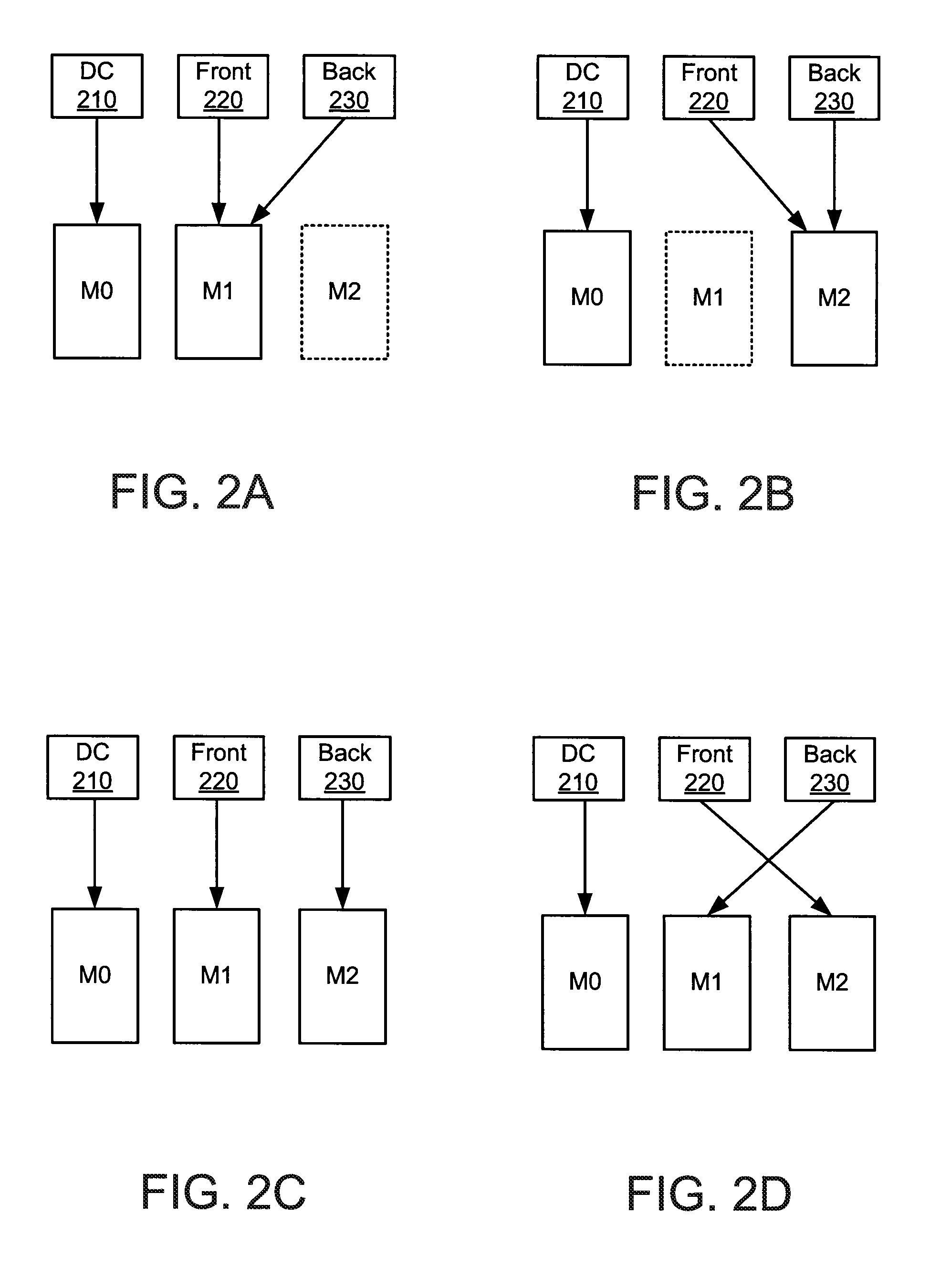Memory management based on automatic full-screen detection
a memory management and automatic detection technology, applied in static indicating devices, instruments, cathode-ray tube indicators, etc., can solve the problems of adding complexity and traditional systems may not automatically detect conditions
- Summary
- Abstract
- Description
- Claims
- Application Information
AI Technical Summary
Problems solved by technology
Method used
Image
Examples
Embodiment Construction
[0012]Embodiments described herein facilitate switching between Full-Screen Mode and Windowed Mode in a display system. Not only is the switching performed automatically, but also the switching is accomplished by using a minimum number of buffer content copy operations. This is significant, given that various embodiments described herein relate to application and processes that employ double buffering in video memory when rendering display content to a display screen.
[0013]FIG. 1 is a block diagram according to various embodiments. System 100 includes a graphics processor 110, a memory 130, and a display 140. More components or fewer components could be used in other embodiments. For example, various embodiments might include input / output devices, additional memory units, and / or other computing modules. As shown, graphics processor 110 includes one or more applications 112, a window server 114, a kernel driver 116, and a display controller 124. Applications 112 can be the source of ...
PUM
 Login to View More
Login to View More Abstract
Description
Claims
Application Information
 Login to View More
Login to View More - R&D
- Intellectual Property
- Life Sciences
- Materials
- Tech Scout
- Unparalleled Data Quality
- Higher Quality Content
- 60% Fewer Hallucinations
Browse by: Latest US Patents, China's latest patents, Technical Efficacy Thesaurus, Application Domain, Technology Topic, Popular Technical Reports.
© 2025 PatSnap. All rights reserved.Legal|Privacy policy|Modern Slavery Act Transparency Statement|Sitemap|About US| Contact US: help@patsnap.com



